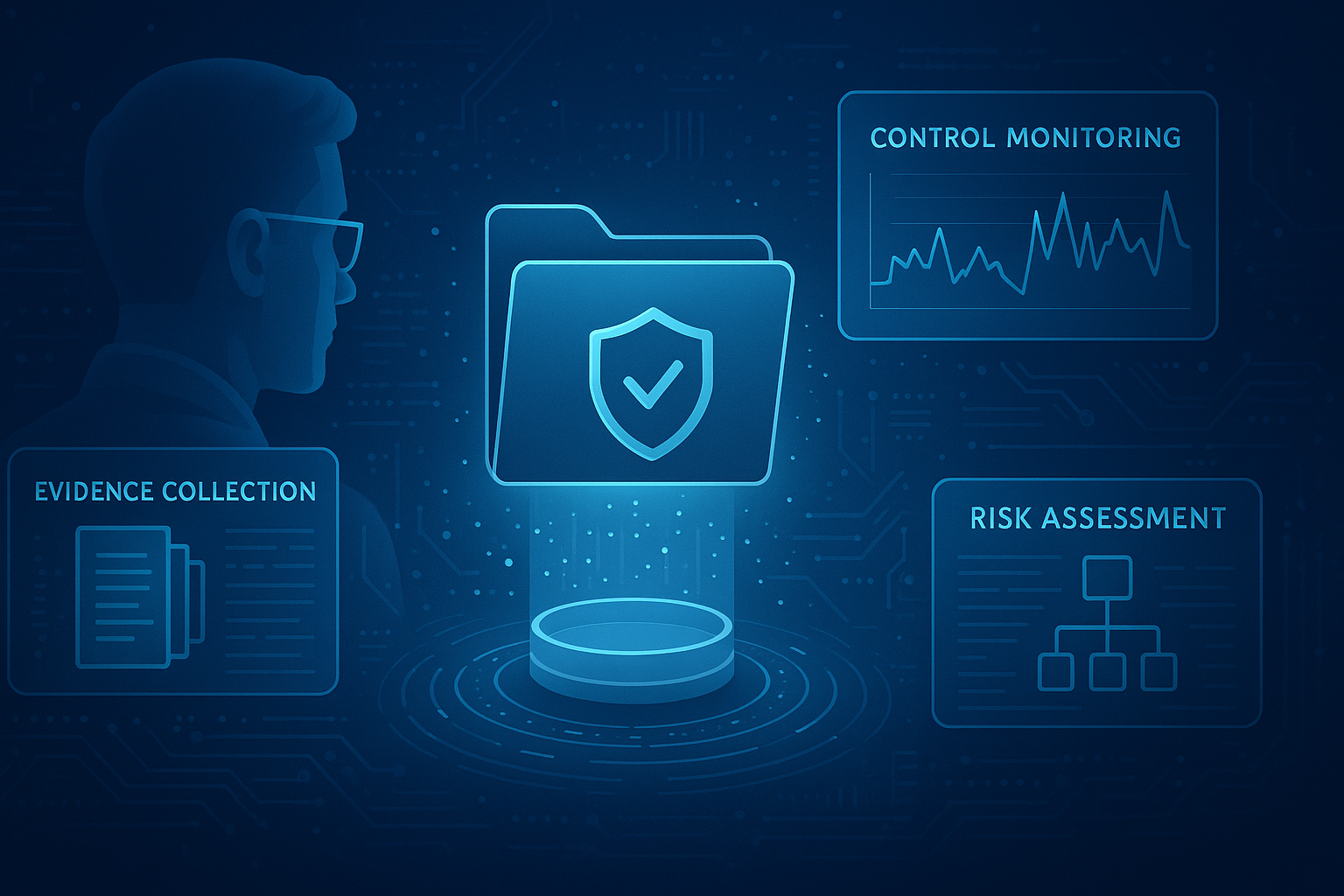Cyber risk management is a proactive practice that supports continuous cybersecurity practices so that security professionals can manage threats in real-time. One of the core tenets of cyber risk management is to proactively manage and assess threats by monitoring risk posture at the control level. Security professionals must view cyber as a circular, continuous practice instead of a linear compliance destination.
Compliance only solves some of your cyber-related problems. Cyber risk management is the top suggested approach to cybersecurity, and security teams can organize their practice using the NIST Risk Management Framework (RMF). The RMF provides a structured process for managing and mitigating risks to information and cyber systems. It focuses on the entire cyber risk management lifecycle, from risk assessment to risk mitigation and continuous monitoring.
NIST developed the RMF for federal government agencies, but private sector organizations can also apply it. The RMF is widely used by organizations that must comply with federal regulations, like FISMA.
Like the core tenets of cyber risk management, the RMF emphasizes actively assessing and managing risks to information systems, including selecting and implementing security controls based on a system's risk profile. And, if you’re starting from scratch, the NIST RMF provides teams with an organized six-step process.
Breaking Down the NIST RMF Steps
The NIST RMF consists of six key steps that guide organizations through managing and mitigating risks to their information systems. These steps are as follows:
Categorize: The first step involves categorizing the information system based on its data, functionality, and importance to the organization. This step identifies the system's security objectives and the potential impact of a data breach and establishes a baseline for security controls.
Select: In this step, organizations select the appropriate security controls from the NIST Special Publication 800-53 catalog. The selection is based on the system's categorization, risk assessment, and other requirements.
Implement: Once the security controls are selected, they are implemented within the information system. This step involves configuring, deploying, and integrating the controls into the system's architecture. It ensures the controls appropriately protect the system and its assets.
Assess: The implemented security controls are assessed to determine their effectiveness and compliance with the established requirements. Security assessments, testing, and evaluations are conducted to identify any vulnerabilities or weaknesses in the controls and overall system security.
Authorize: Based on the assessment results, the system undergoes an authorization process. The risks identified during the assessment are evaluated, and a decision is made regarding the system's authorization to operate. This decision considers the level of risk acceptable to the organization and any additional measures needed to mitigate risks.
Monitor: The final step involves continuous monitoring of the system's security controls and overall security posture. Ongoing monitoring activities, including security assessments, incident detection, and response, are performed to ensure the security controls remain effective over time. Any system or environment changes are considered, and updates or adjustments to the security controls are made as necessary.
These six steps of the NIST RMF offer a structured approach for organizations to systematically manage risks, implement security controls, and maintain a robust security posture for their information systems.
Build Your Cyber Foundation Based on the RMF
The six RMF steps provide context for how the RMF is divided and highlight critical capabilities for each step. However, new companies may need more guidance on building their cyber practices alongside a comprehensive framework like the RMF.
Here's a step-by-step approach to help new companies comply with the RMF:
Familiarize Yourself with RMF: Gain a comprehensive understanding of the NIST RMF and its components. Review relevant NIST publications, such as NIST Special Publication 800-37, which provides detailed guidance on the RMF process.
Identify Information Systems: Determine the information systems within your organization that must comply with the RMF. Categorize these systems based on the data they process, their criticality, and their potential impact on the organization if compromised.
Determine Compliance Requirements: Assess the specific compliance requirements applicable to your organization. This could include legal or regulatory obligations, industry standards, contractual agreements, or customer expectations.
Tailor the RMF: Adapt the RMF to the needs and resources of your new company. Recognize that as a new company, you might have different challenges and constraints than larger, more established organizations. Customize the RMF implementation to fit your unique circumstances while ensuring compliance.
Alignment with large frameworks like the NIST CSF or RMF is an incremental process. Instead of trying everything immediately, establish a base layer of cyber practices and controls and build from there.
Engage Stakeholders: Collaborate with key stakeholders, such as executive leadership, IT personnel, and security teams. Ensure everyone understands the importance of the RMF and their roles in the process. Seek their input and support throughout the implementation.
Regularly report cybersecurity to the board leadership. More and more, board leaders are recognizing the criticality of cyber risk and are looking for clarity on the impact of cyber on business. By establishing a connection between cyber and business, your organization will be better primed to make cyber-informed business decisions.
Establish Governance Structure: Define a structure that outlines roles, responsibilities, and decision-making processes related to RMF compliance. Assign individuals responsible for overseeing and coordinating compliance efforts within the organization.
Perform Risk Assessments: Conduct regular cyber risk assessments to identify and evaluate potential threats, vulnerabilities, and impacts. Determine each system's security objectives and requirements, and prioritize risks based on their significance. Security leaders need precise and updated information on the risk posture to make informed decisions. Leaders cannot make decisions based on assessments completed months prior. Leveraging a cyber risk platform like CyberStrong can automate the risk assessment process and deliver updates in minutes.
Select and Implement Controls: Based on the risk assessments, select appropriate security controls from the NIST Special Publication 800-53. Implement these controls that align with your organization's risk appetite, available resources, and system requirements.
Conduct Security Assessments: Perform security assessments and testing to verify the effectiveness of the implemented controls. This includes vulnerability scanning, penetration testing, and other evaluation techniques to identify weaknesses or gaps.
Establish Ongoing Monitoring: Implement a continuous monitoring program to assess the effectiveness of security controls and detect potential security incidents. Regularly review and update security measures to adapt to changing threats and evolving technology.
In Gartner’s latest report, Innovation Insight: Continuous Control Monitoring, researchers discussed the criticality of using continuous control monitoring (CCM) tools. This method focuses on real-time risk management and a proactive approach to security, keeping your organization one step ahead of potential threats.
CyberSaint has a unique approach to CCM with continuous control automation (CCA) which monitors control performance and changes in real-time.
Maintain Documentation: Keep thorough documentation of your RMF implementation, risk assessments, security controls, assessment results, and authorization documentation. This documentation is evidence of compliance and helps maintain a robust security posture.
Wrapping Up
Remember that compliance with the RMF is an ongoing process. Continuously monitor and assess your cyber risk posture, proactively respond to control failure and potential threats, and review cyber risk processes as necessary. By following these steps, new companies can establish a solid foundation for compliance with the NIST RMF and enhance their cybersecurity practices from the start.





.png)
.png)
.png)
%201.png)
.png)




